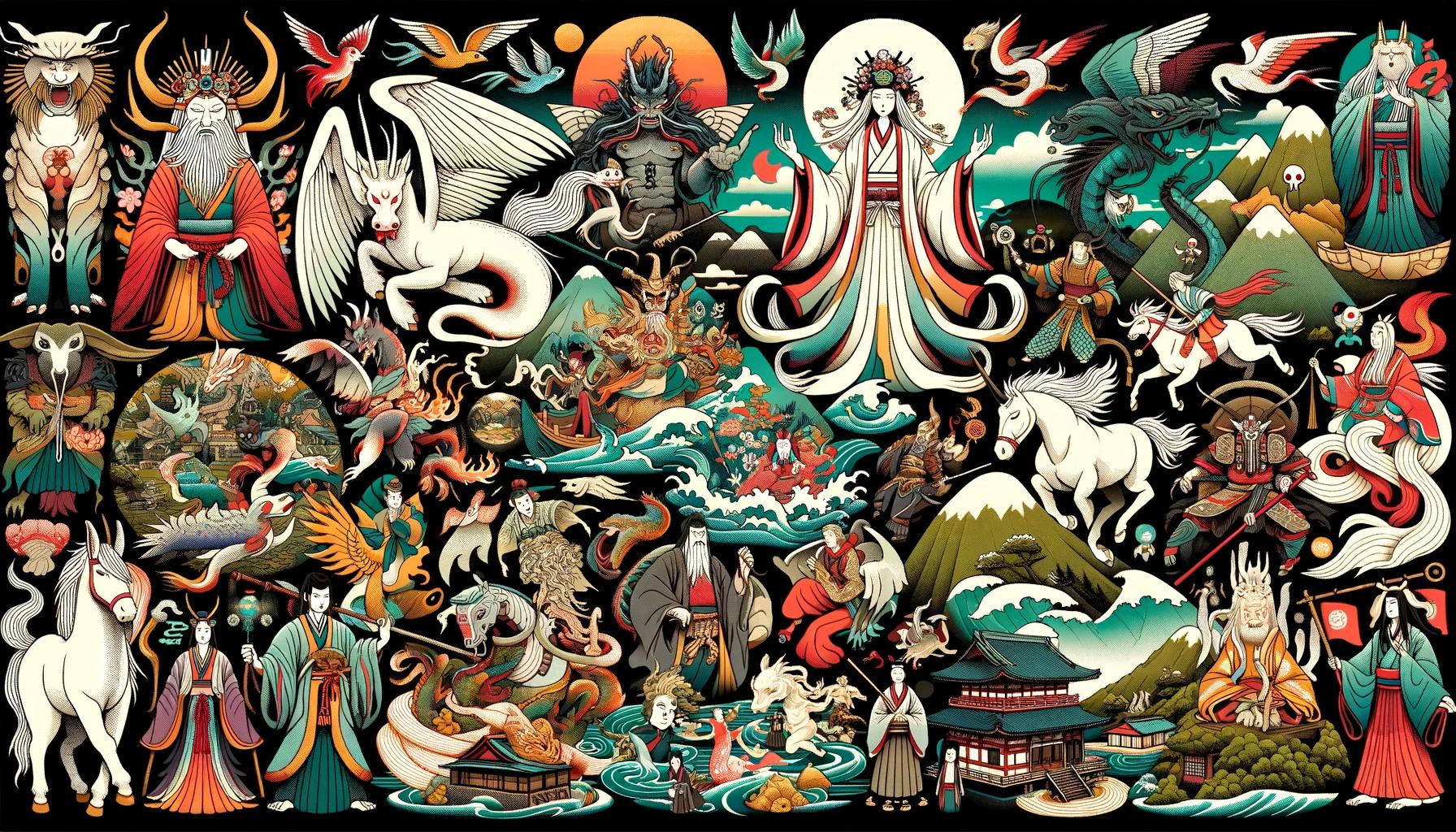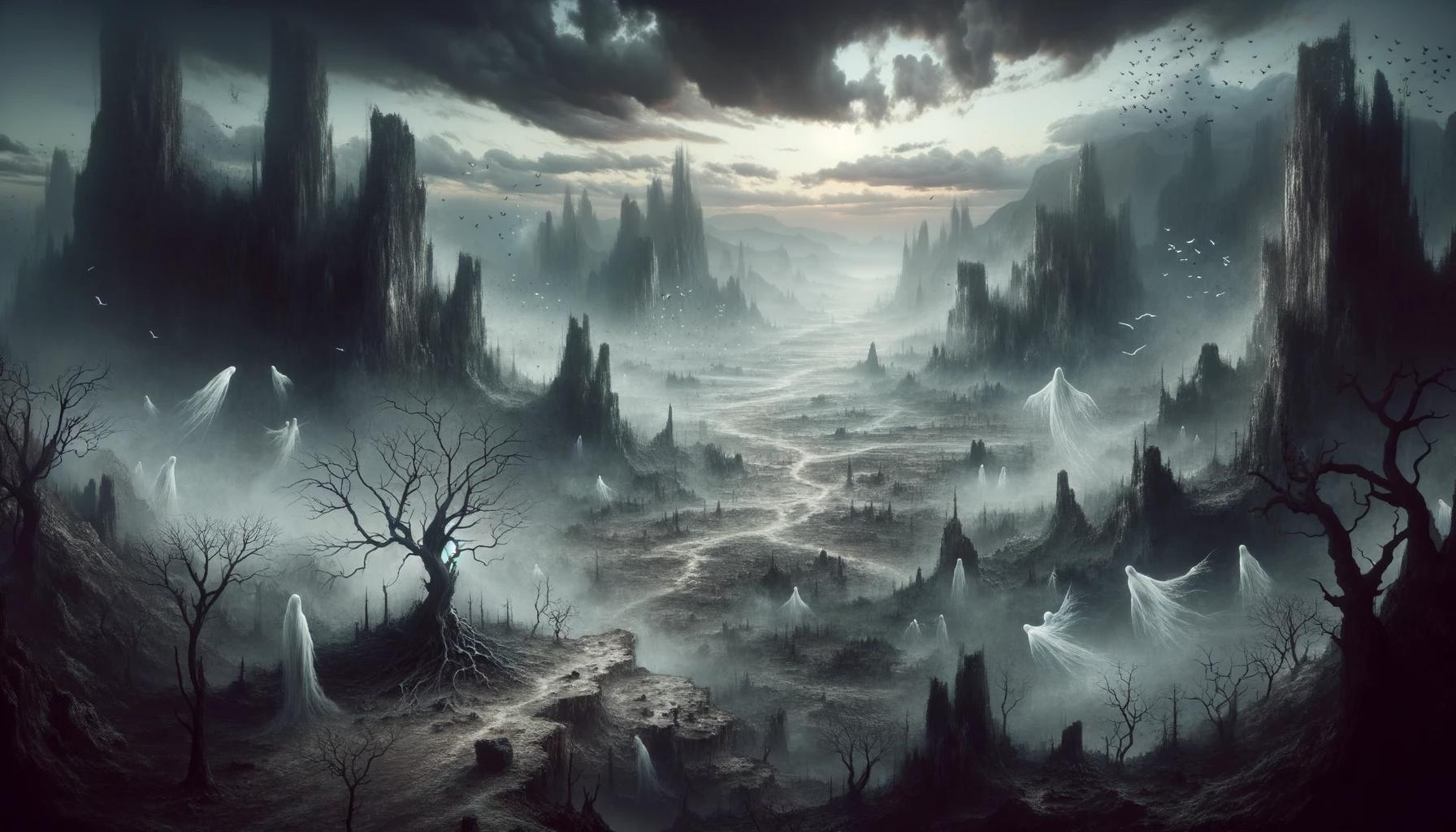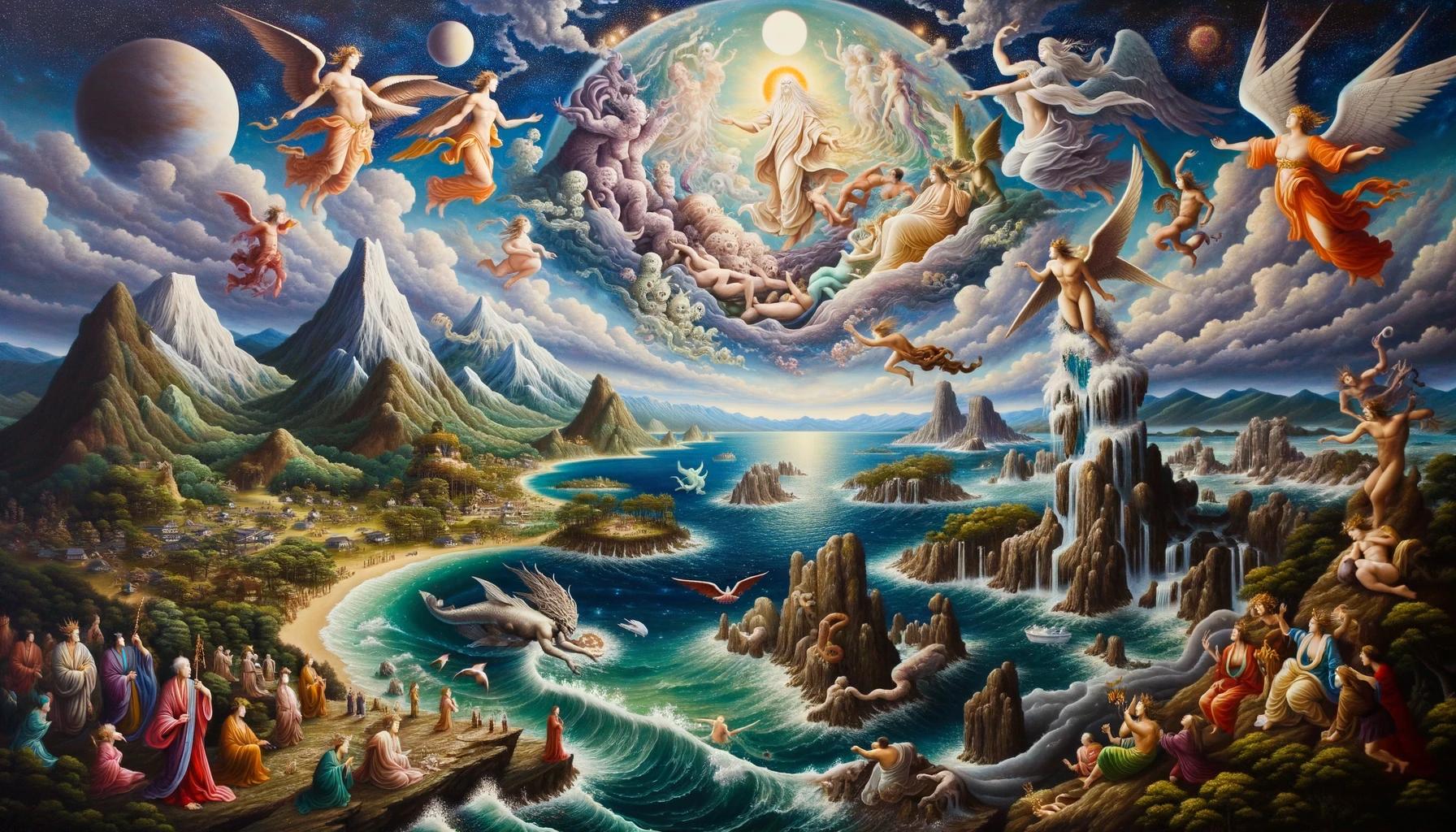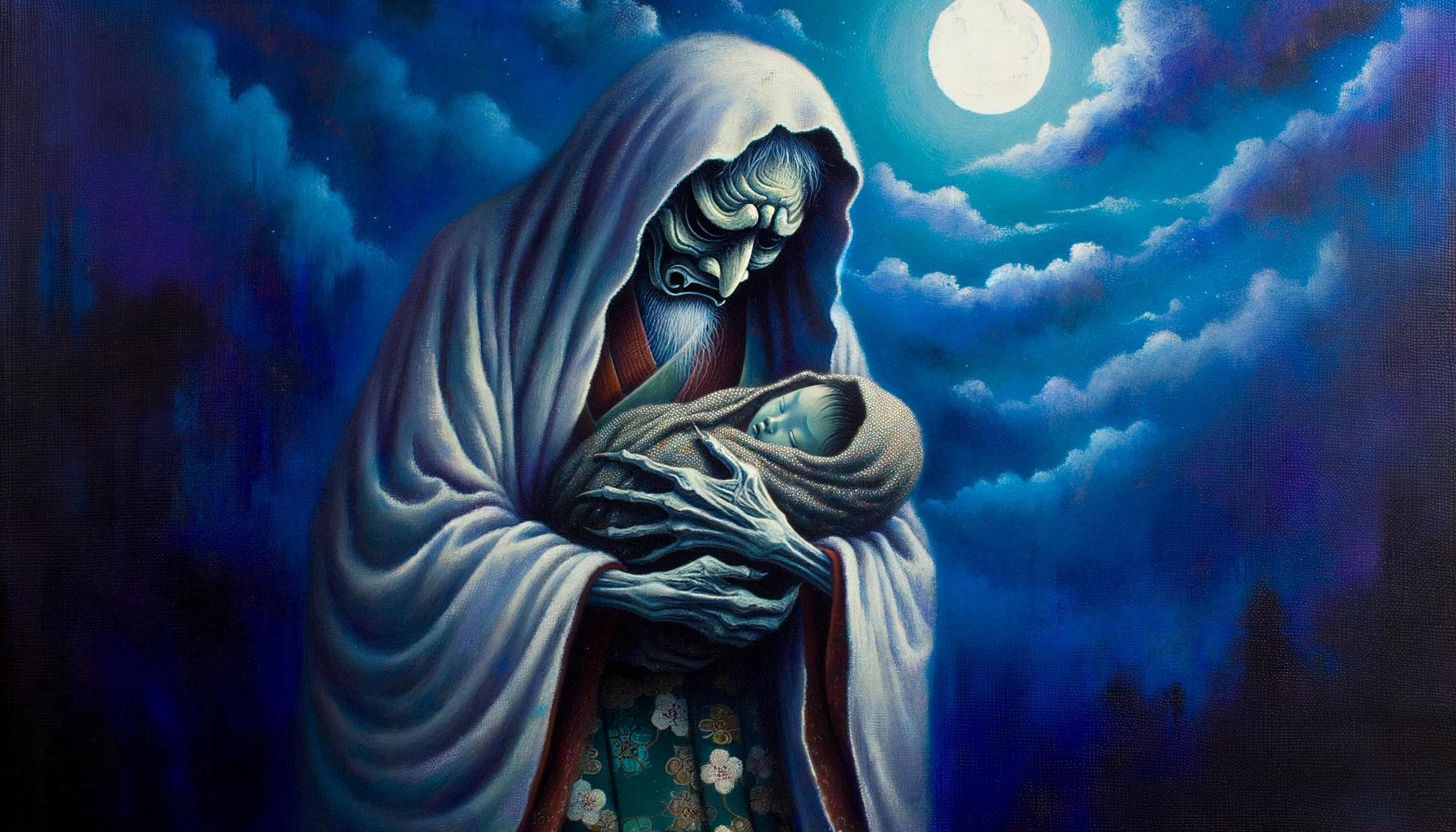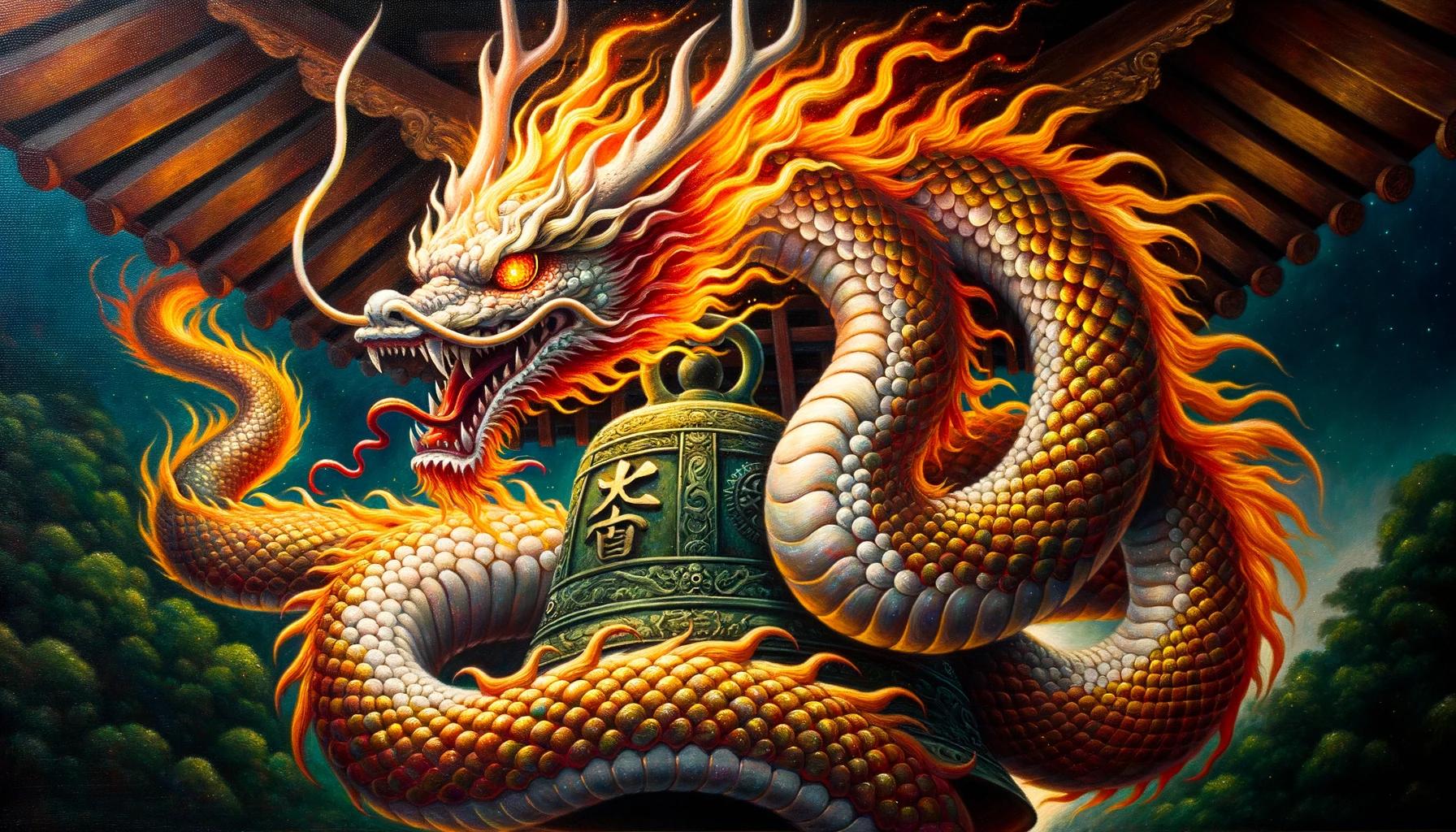Japanese Mythology in Popular Culture: Exploring the Enchanting Influence
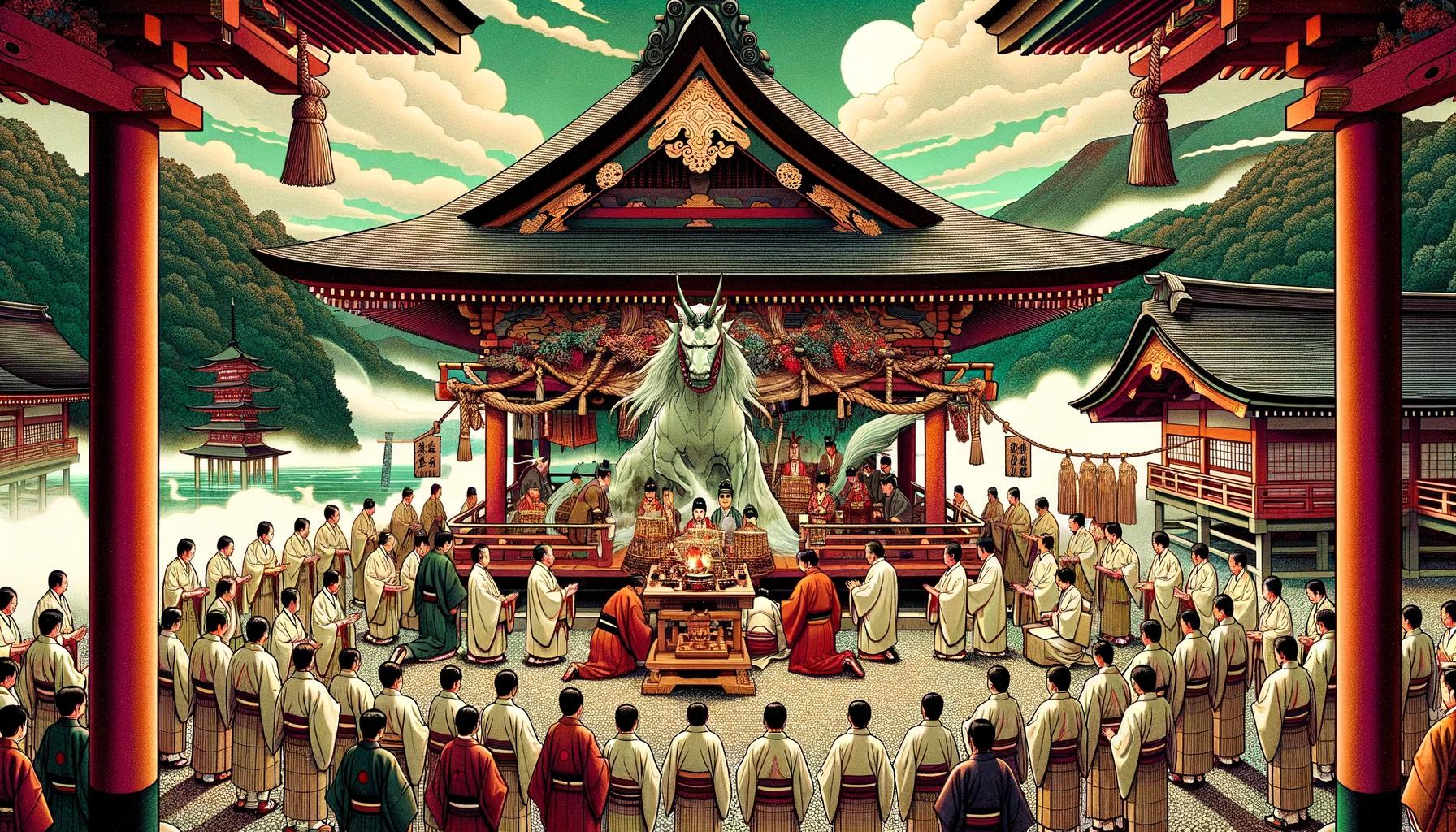
Japanese mythology has had a significant impact on popular culture, influencing various forms of entertainment such as anime, manga, music, and literature. This article explores the presence of Japanese mythology in different mediums, including the portrayal of mythological characters, themes, and symbols in anime and manga.
It also highlights the incorporation of mythological elements in music, the representation of death deities in fiction, works inspired by Japanese myths and legends, the presence of supernatural creatures in Japanese folklore, and the availability of merchandise related to Japanese mythology.
Additionally, the article briefly discusses the literary and archaeological sources that contribute to the understanding of Japanese mythology’s roots. The influence of Japanese mythology in popular culture is vast, and this article aims to provide a comprehensive overview of its impact.
The Influence of Japanese Mythology on Anime and Manga
This section explores the captivating influence of Japanese mythology on the world of anime and manga. It showcases how mythological elements have inspired and shaped popular anime series and manga, as well as the incorporation of mythological characters, themes, and symbolism in these forms of entertainment.
Popular Anime Series and Manga Inspired by Japanese Mythology
Japanese mythology has served as a rich source of inspiration for numerous anime series and manga. These captivating stories often draw from mythical tales and legends, reimagining them in unique and engaging ways.
Some notable examples include:
- Naruto: With characters like the Nine-Tailed Fox and mythology-inspired powers, Naruto showcases the influence of Japanese mythology.
- Inuyasha: Drawing on Japanese folklore, this series brings to life various mythical creatures and explores themes of magic and adventure.
- Fate/stay night: Incorporating figures from mythology and legend, Fate/stay night weaves a tale of heroic battles and complex narratives.
Mythological Characters in Anime and Manga
The world of anime and manga is populated by a multitude of mythological characters, both gods and creatures.
These characters possess distinct traits and powers associated with Japanese mythology:
- Sun Wukong: Inspired by the Monkey King from the Chinese epic Journey to the West, this mischievous and powerful character often appears in anime and manga.
- Amaterasu: The goddess of the sun in Japanese mythology, often depicted as a significant figure in various anime and manga.
- Kitsune: The legendary fox spirits play prominent roles in many anime and manga, with their shapeshifting abilities and cunning nature.
Themes and Symbolism from Japanese Mythology in Anime and Manga
Japanese mythology provides a rich canvas for exploring profound themes and incorporating symbolism in anime and manga.
These stories often delve into concepts such as:
- Hero’s Journey: Inspired by mythological hero archetypes, anime and manga frequently depict protagonists embarking on epic quests and overcoming challenges.
- Balance of Good and Evil: Drawing from the dichotomy of divine and demonic forces in Japanese mythology, anime and manga explore the interplay between light and darkness.
- Cultural Identity and Tradition: Through mythological elements, anime and manga delve into the complexities of Japanese culture, preserving traditions, and exploring cultural heritage.
Thus, the influence of Japanese mythology on anime and manga is undeniable, as it continues to shape captivating narratives, iconic characters, and thought-provoking themes in popular culture.
Japanese Mythology in Music
Japanese mythology has had a significant impact on the world of music, both in traditional and contemporary contexts. This section delves into the different ways in which Japanese mythology is reflected in musical creations.
Traditional Japanese Music and Mythological Themes
In traditional Japanese music, mythological themes are often interwoven, serving as a source of inspiration and capturing the essence of ancient myths. These musical compositions and performances embrace the rich cultural heritage of Japan, bringing mythical characters and stories to life through sound and rhythm.
From epic tales of gods and goddesses to celestial battles and natural forces, traditional Japanese music offers a captivating glimpse into the world of Japanese mythology.
Contemporary Music Influenced by Japanese Mythology
Beyond traditional music, Japanese mythology also permeates contemporary music genres, leaving its mark on various artists and musical styles.
Modern musicians draw inspiration from mythological figures, utilizing their symbolism and narratives to create lyrical and melodic compositions that resonate with audiences globally. By incorporating elements of Japanese mythology into their music, these artists pay homage to the country’s cultural heritage and showcase its enduring influence on popular culture.
In conclusion, Japanese mythology holds a significant place in the realm of music, both in traditional and contemporary contexts. From traditional compositions that capture the essence of ancient myths to contemporary creations that draw inspiration from mythological figures, music gives voice to the rich mythological tapestry that is deeply ingrained in Japanese culture.
Shinigami in Fiction: Exploring the Role of Death Deities in Popular Culture
Shinigami, or death deities, play a fascinating role in various forms of popular culture, including anime, manga, and literature. They are often depicted as supernatural beings responsible for guiding souls to the afterlife or as agents of death themselves.
This section delves into the portrayal of shinigami characters and explores the themes and concepts surrounding them in pop culture.
Shinigami Characters in Anime, Manga, and Literature
In the realms of anime, manga, and literature, a multitude of captivating shinigami characters have emerged. They possess intriguing traits and abilities, captivating audiences with their stories. From series like Death Note to Bleach, these characters often serve as intriguing protagonists or antagonists, grappling with complex moral dilemmas and influencing the lives of mortals.
Shinigami Themes and Concepts in Pop Culture
Shinigami themes and concepts extend beyond individual characters, permeating various aspects of pop culture. The exploration of mortality, the afterlife, and the balance between life and death are central to many narratives.
Shinigami symbols and ideologies often serve as powerful storytelling tools, provoking thought and evoking emotions in audiences. Whether it’s contemplating the nature of death or questioning the consequences of human actions, the presence of shinigami in popular culture sparks explorations of existential themes.
Works Based on Japanese Myths and Legends
Novels, Books, and Graphic Novels Inspired by Japanese Myths
A plethora of captivating novels, books, and graphic novels draw inspiration from Japanese myths and legends. These literary works transport readers into enchanting worlds filled with mystical creatures and heroic tales.
Authors skillfully incorporate the rich tapestry of Japanese folklore, weaving captivating narratives that captivate readers of all ages. Immerse yourself in the captivating works of authors like Lafcadio Hearn, Yoko Ogawa, and Haruki Murakami, where traditional myths fuse with imaginative storytelling to create unforgettable reading experiences.
Movies and TV Shows that Adapt Japanese Mythological Stories
The silver screen is another avenue where Japanese myths and legends come alive. In movies and TV shows, filmmakers often adapt and reinterpret ancient tales, bringing them to modern audiences. Witness breathtaking cinematography and brilliant storytelling in movies such as “Princess Mononoke,” “Spirited Away,” and “The Tale of the Princess Kaguya.”
TV shows like “Mushishi,” “Noragami,” and “Mononoke” offer captivating narratives, with each episode delving into the intricate depths of Japanese mythology.
Yōkai in Popular Culture: Supernatural Creatures in Japanese Folklore
Japanese folklore is rich with fascinating creatures known as Yōkai, which have captured the imaginations of people around the world.
This section explores the presence of Yōkai in popular culture, specifically their portrayal in anime, manga, and games. These supernatural beings, often depicted as mysterious or mischievous, play a significant role in shaping the narratives and aesthetics of these forms of entertainment.
Notable Yōkai in Anime, Manga, and Games
In the realm of anime, manga, and games, numerous Yōkai have gained widespread recognition and popularity. From the mischievous kitsune (a fox-like creature with shape-shifting abilities) to the eerie oni (a type of demon or ogre), these mythical beings have become iconic figures in the world of Japanese popular culture.
Some notable examples of Yōkai characters include the mischievous and beloved Nekomata from the anime series “GeGeGe no Kitaro,” the sinister Kuchisake-onna (slit-mouthed woman) from “The Junji Ito Collection,” and the charismatic Kyūbi from the hit video game “Nioh.”
Yōkai Legends and Folklore in Modern Interpretations
Modern interpretations of Yōkai legends and folklore have breathed new life into these ancient tales. Anime, manga, and games have served as platforms for artists and storytellers to explore and reimagine these mythical creatures.
Through captivating visuals, intricate storylines, and immersive gameplay, these mediums bring Yōkai legends into the modern consciousness. One such example is the manga and anime series “Yokai Watch,” which follows the adventures of a young boy who can communicate with various Yōkai.
These contemporary interpretations not only entertain but also educate audiences about the rich cultural heritage of Japan. They provide a gateway for viewers and readers alike to delve into the captivating world of Yōkai and understand the significance of these creatures in Japanese folklore.
Mythological Products and Collectibles: Exploring Merchandise Inspired by Japanese Mythology
Delve into the world of mythological products and collectibles that draw inspiration from Japanese mythology. Discover a vast array of figurines, statues, and artwork featuring iconic mythological characters. These collectibles beautifully capture the essence and mystique of beings like Amaterasu, Ame-no-Uzume, Kitsune, and more.
Immerse yourself in the intricate details and craftsmanship of these exquisite pieces.
Figurines, Statues, and Artwork Featuring Mythological Characters
Immerse yourself in the realm of Japanese mythology with a stunning collection of figurines, statues, and artwork. Marvel at meticulously crafted figurines that bring iconic mythological characters to life. Adorn your shelves with statues that capture the essence of gods and goddesses.
Get lost in mesmerizing artwork that showcases the rich mythology and folklore of Japan. These collectibles serve as wonderful displays of artistry and devotion to Japanese mythology.
Weapons and Armor Inspired by Japanese Mythology
Experience the power and allure of weapons and armor inspired by Japanese mythology.
Explore an array of swords, katana, and other traditional weapons crafted with precision and reverence. Admire authentic reproductions that pay homage to legendary blades from myth and folklore. Dress the part with mythical-inspired armor that evokes the spirit of ancient warriors.
These artifacts embody the strength and mythology of the past, allowing you to connect with Japanese folklore in a tangible way.
Literature and Archaeological Sources: Understanding the Roots of Japanese Mythology
Kojiki and Nihon Shoki: Ancient Texts on Japanese Mythology
The Kojiki and Nihon Shoki are two ancient texts that provide invaluable insights into Japanese mythology.
These texts, composed in the 8th century, chronicle the creation story, the pantheon of major gods, and well-known tales in Japanese mythology. The Kojiki, often referred to as “Records of Ancient Matters,” is the oldest surviving chronicle of Japan’s history and mythology.
It contains mythological accounts, genealogies, and folklore. The Nihon Shoki, also known as “The Chronicles of Japan,” further expands on the stories and provides historical records of the reigns of emperors.
Shintoism, Chinese, and Indian Influences on Japanese Mythology
Shintoism, the indigenous religion of Japan, has played a significant role in shaping Japanese mythology. The belief in kami, or divine spirits, and the reverence for nature are integral components of Shinto practice and have influenced the myths and legends.
Additionally, Japanese mythology bears traces of influences from Chinese and Indian mythologies. Through cultural exchanges and trade, various concepts, deities, and motifs from Chinese and Indian myths found their way into Japanese folklore and mythology.
- The Impact of Shintoism on Japanese Mythology
- Chinese Influences on Japanese Mythology
- Indian Influences on Japanese Mythology
These outside influences enriched Japanese mythology, leading to a diverse and vibrant tapestry of stories, deities, and beliefs.
The interplay between indigenous Shintoism and external influences contributed to the unique character of Japanese mythology as it is known today.
In summary, the influence of Japanese mythology in popular culture is vast and far-reaching.
It has left an indelible mark on various forms of entertainment, including anime, manga, music, literature, and even merchandise. Through the representation of mythological characters, themes, and symbols, Japanese mythology has captivated audiences and shaped the creative landscape in numerous ways.
From the enchanting world of yōkai to the deep-rooted significance of shinigami, these mythological elements continue to inspire and fascinate both creators and consumers.
Japanese mythology has provided a rich source of inspiration for popular anime series and manga, resulting in captivating stories that weave ancient tales with modern narratives.
The incorporation of traditional Japanese music and mythological themes into compositions has led to memorable soundtracks that transport listeners to mystical realms. Moreover, the exploration of death deities, such as shinigami, in fiction adds depth and intrigue to popular culture.
Works based on Japanese myths and legends have introduced audiences to captivating worlds, reimagining ancient tales through books, graphic novels, movies, and TV shows. These adaptations breathe new life into age-old stories, inviting audiences to immerse themselves in the wonders of Japanese mythology.
The portrayal of supernatural creatures, known as yōkai, in anime, manga, and games has carved a niche in popular culture. From mischievous kitsune to menacing oni, these mythical beings continue to captivate audiences with their otherworldly nature.
The availability of mythological products and collectibles further showcases the profound impact of Japanese mythology in popular culture. From figurines and artwork featuring mythological characters to weapons and armor inspired by the rich lore, fans can surround themselves with tangible representations of these captivating tales.
Looking Ahead: Future Trends and Developments in Japanese Mythology’s Influence
As we look to the future, the influence of Japanese mythology in popular culture shows no signs of slowing down. With the ever-growing popularity of anime, manga, and other forms of entertainment, there will likely be a continued exploration and incorporation of mythological elements.
Moreover, as new generations of creators emerge, we may witness fresh interpretations and perspectives on Japanese mythology in various mediums. With advancements in technology, we can expect even more immersive and visually stunning portrayals of mythological worlds and characters.
Furthermore, as the appreciation for diverse cultures continues to grow, there is a possibility of discovering lesser-known aspects of Japanese mythology and expanding their presence in popular culture. This could lead to the exploration of regional myths and lesser-known deities, offering new storytelling opportunities.
In conclusion, Japanese mythology remains a powerful force in shaping popular culture. Its enduring impact can be witnessed in the ongoing portrayal and exploration of mythological themes, characters, and symbols in various forms of entertainment.
The continued fusion of ancient legends with modern storytelling techniques ensures that Japanese mythology will remain a vibrant and integral part of popular culture now and in the future.
.

